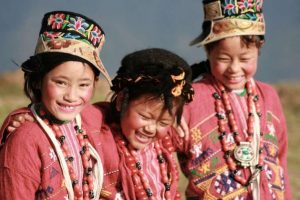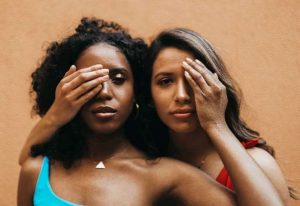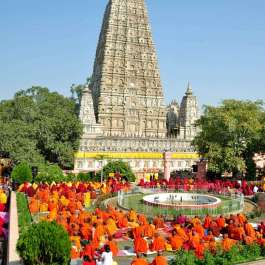Beginner’s Mind is a special project from BDG collecting insightful essays written by US college students who have attended experiential-learning courses related to Buddhism. Some of the authors identify as Buddhists, for others it is their first encounter with the Buddhadharma. All are sharing reflections and impressions on what they’ve learned, how it has impacted their lives, and how they might continue to engage with the teaching.
Krista Nguyen wrote this essay for her Buddhist Modernism course at the University of Southern California. Krista is a sophomore majoring in Health and Human Sciences at USC, with an emphasis in Pre-Med. After graduation, she will attend medical school in the hope of becoming a doctor.

I selected this course because my family comes from a Buddhist background and I wanted to deepen my understanding of Buddhism. In knowing less of the core philosophies of Buddhism, I was also confused about how Buddhism fits into the modern world and the reality around me. With the surge in political movements in the last few years, I previously held the notion that Buddhism was very separate from all that. And as an activist, I had often hoped to find a sense of internal peace while still believing in these same causes. It can easily become exhausting because modern-day activism, especially among the generation that grew up with the Internet, is interwoven with heavy emotions and mental chaos. However, I am now beginning to see how one can be a passionate activist while building internal strength and endurance, which will ultimately help to prevent burnout and exhaustion.
So far, I have enjoyed the readings about Buddhism in education, Thich Nhat Han, and Medine’s “Beyond Vietnam.”* I was surprised to see the link between Vietnamese Buddhism and the civil rights movement in the United States, and it was interesting to note how these two seemingly opposite movements actually supported each other. Before the class, I had questions about how Buddhists, if behaving mindfully and peacefully, can still be the type of activists we see on the ground today.
We have seen examples of Buddhists engaging in their own forms of activism of various kinds, and this has forced me to see the methodologies of different activists in a new light. I have learned how we can analyze the Buddhist religion from a secular perspective without discrediting any religious beliefs. There are also many different forms of the same religion that are not necessarily right or wrong, as there is no one true form of the religion itself. My greatest takeaway from the class has been the core Buddhist philosophies of suffering and no-self, which I had not fully understood. Overall, I think that having a sense of no-self helps us to connect with others and the world, strengthening our compassion and our understanding of social justice movements.
My relationship with my own daily routines has changed because I have begun to see other movements or value systems in alignment with Buddhism. For example, I learned from an education-themed course about new movements to understand the backgrounds of students in order to cultivate their learning and give them better opportunities. This was created to understand the educational institution as a fundamental experience in the raising of children. Since this course, I now see how this is a Buddhist-supported value. Similarly, I take a yoga class that has a small lecture component with many Sanskrit terms. The course instructor has not specifically explained the religious background of the terms we learn in order to not push religion onto us, but it has reminded me of our class discussion when we talked about how institutions often don’t acknowledge the religious origins of a practice.
In terms of the mindfulness practice we have learned in class, I feel I am much more in tune with how I feel and react in certain situations. In the past year, I started feeling various strong emotions, but found it harder to identify the root causes of my feelings. Meditation and mindfulness have helped me come to terms with identifying my emotions and letting them pass. I often felt that my emotions would control me but I have since strengthened my ability to see them as passing thoughts in my mind. I also generally feel calmer and more understanding of others because although my initial reactions may be harsh, my second thoughts and first actions are more aligned to these principles.
If I could design this course myself, I would try to implement some real-time thought experiments or simulations in which students could “experience” Buddhism. Acting out different scenarios and analyzing possible Buddhist or non-Buddhist reactions or opinions, could provide a great hands-on learning experience. For example, we could re-enact a particular historical war background prompt, and different class members could embody their possible reactions and try to justify their reasoning with secular or religious logic. This could provide insight into why certain Buddhist monks and lay practitioners chose the paths they did in major historical moments. Using Buddhism as a logical point to explain activist participation in different movements has been very interesting to me. While not everyone in that movement needs to be of a certain religion, it can be a source of additional support for an individual participating and help them persist.
If I were to describe this course and my learning experience, I would say that one should prepare to come with both a cynical and an open mind. Through the many topics we discuss in class, there are often layers and nuances in terms of how socially engaged Buddhists are perceived. We often question whether the Buddhists are engaged enough, or whether the socially engaged are Buddhist enough. We question whether proposed strategies and theories are not enough or whether they go too far. This class has taught me to challenge what has already been established, and the readings themselves have helped to broaden my initial thought processes.
* This research article reveals the link between Thich Nhat Hanh’s engaged Buddhism and Dr. Martin Luther King’s civil rights movement.
References
Medine, Carolyn M. Jones. “‘Beyond Vietnam’ Martin Luther King, Jr., Thích Nhất Hạnh, and the Confluence of Black and Engaged Buddhism in the Vietnam War,” in Buddhism and Whiteness: Critical Reflections (Lexington Books, 2019), edited by George Yancy and Emily McRae, pp. 119–42.
Related features from BDG
Connecting with Interconnection
Self-Compassion: Learning to Hear Myself
Finding My Path to Liberation











